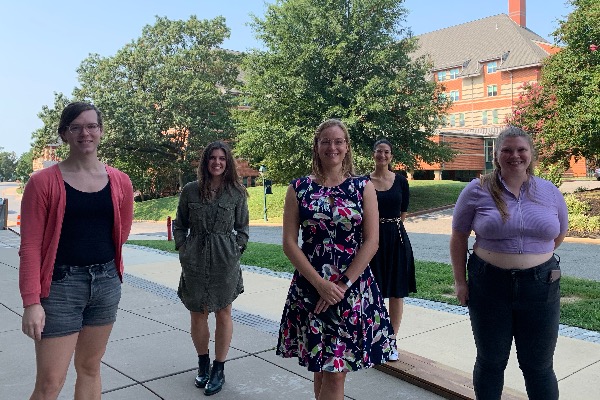New publication on motion perception in Deaf signers published in neuroscience journal

Dr. Lorna Quandt, assistant professor in the Ph.D. in Educational Neuroscience (PEN) program and director of the Action and Brain Lab (ABL), is the lead author on a publication that has been accepted into a special issue of Neuropsychologia, an international interdisciplinary journal devoted to understanding human cognition and behavior from a neuroscience perspective.
Titled "Enhanced Biological Motion Perception in Deaf Native Signers,” the article shows both behavioral and EEG evidence for less effortful, and faster, discrimination of human biological movements in deaf signers, compared to hearing non-signers. Article co-authors are PEN alumna Dr. Emily Kubicek, current PEN student Athena Willis, and Jason Lamberton, a human computer interaction engineer in VL2’s Motion Light Lab.
“I am thrilled that we have this important work out in the world now reflecting many years of hard work,” said Dr. Quandt. “This work suggests that deaf people who learn sign language early may possess perceptual advantages when it comes to seeing movement. There is more work to be done to better understand this phenomenon, but this paper presents a compelling new idea.”
The paper demonstrates that deaf signers are more easily able to extract relevant movement-related information from their visual environments, even when the movements are difficult to see. This work complements two other recent publications by Dr. Quandt’s research team (sensorimotor discrimination and mental rotation abilities). Altogether these three papers suggest advantages of early sign language use and invoke “Deaf Gain,” a concept that focuses on the sensory and cognitive benefits stemming from the deaf experience.
Abstract: We conducted two studies to test how deaf native signed language users perceive biological motions. We created 18 Biological Motion point-light displays (PLDs) depicting everyday human actions, and 18 Scrambled control PLDs. First, we conducted an online behavioral rating survey, in which deaf and hearing raters identified the biological motion PLDs and rated how easy it was for them to identify the actions. Then, we conducted an EEG study in which Deaf Signers and Hearing Non-Signers watched both the biological motion PLDs and the Scrambled PLDs, and we calculated the time-frequency responses within the theta, alpha, and beta EEG rhythms. From the behavioral rating task, we show that the deaf raters reported significantly less effort required for identifying the Biological motion PLDs, across all stimuli. The EEG results showed that the Deaf Signers showed theta, mu, and beta differentiation between Scrambled and Biological PLDs earlier and more consistently than Hearing Non-Signers. We conclude that native ASL users exhibit experience-dependent neuroplasticity in the domain of biological human motion perception.
For more publications from VL2 scholars, please visit our repository of research papers.